The very best in single-photon detection, with ultra-stable performance
Push your photonic experiments and applications to new heights with our Swiss-made superconducting nanowire single-photon detectors (SNSPDs), combining incredibly high detection efficiency, timing precision, low noise, and fast recovery time.
Mix and match up to 16 detectors in a single ID281 system. Choose from our Standard, Parallel, and Multi-Pixel detector designs with a range of user-customizable specifications for the best performance in your desired application.
Interested in a compact, rack-mounted solution? Check out the ID281 Pro SNSPD system.
Get the best out of your photonic experiments and applications with the ID281 Superconducting Nanowire Series today.
Learn more about Superconducting Nanowire Single-Photon Detectors in our SNSPD Technology Spotlight.
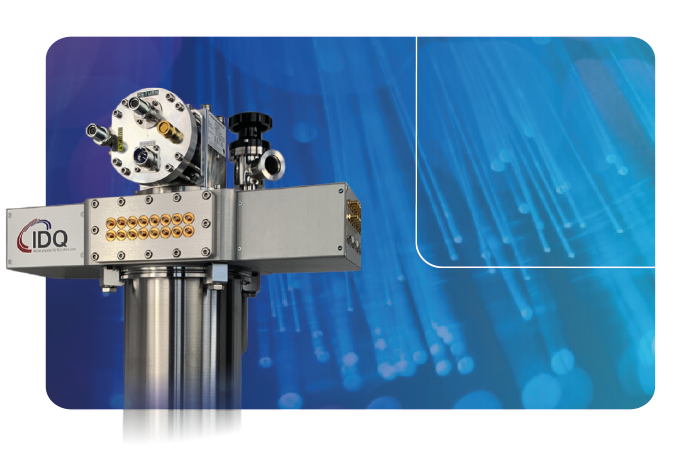
ID281 Standard SNSPD: A single SNSPD with a linear nanowire meander, offering excellent overall performance in terms of system detection efficiency, detector noise, and timing precision. A polarization-insensitive version with a spiral meander is also available.
ID281 Parallel SNSPD: Several interleaved SNSPD pixels connected in parallel on a single readout line, offering ultrafast detection and photon-number resolution. These detectors accurately discriminate multiphoton states and achieve detection rates as high as 100 Mcps in some situations, while still benefiting from the efficiency, precision, noise performance and broadband operation of the ID281 SNSPD range.
ID281 Multi-Pixel SNSPD: Several independent SNSPD pixels each with their own readout lines, offering even faster detection rates > 1 Gcps and ‘dynamic’ PNR robust to longer pulse durations, while still benefiting from the efficiency, precision, noise performance and broadband operation of the ID281 SNSPD range.
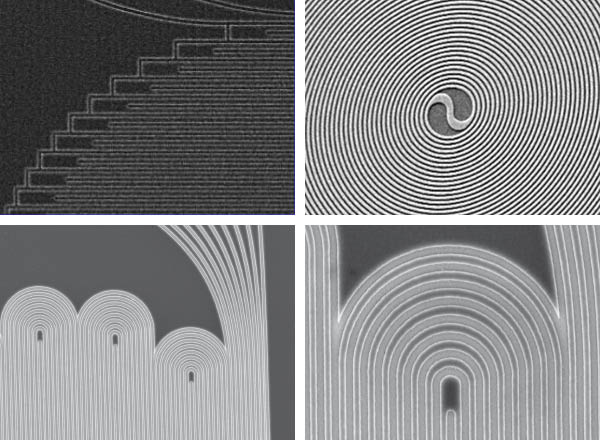
Additionally, the analogue detection pulses must be turned into digital information, meaning the fastest and most precise timing instrumentation is a must-have.
IDQ delivers all this and more, making it the most complete and versatile SNSPD system around.
Interested in a compact, rack-mounted solution? Check out the ID281 Pro SNSPD system.
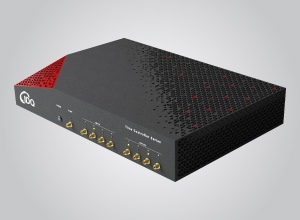
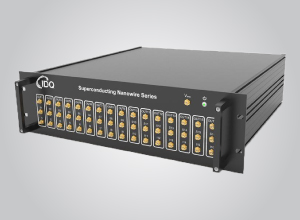
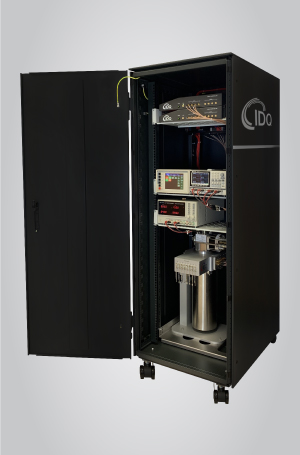
Every ID281 SNSPD has a high system detection efficiency (SDE) across hundreds of nanometers at a user-selected central wavelength. The full range of ID281 SNSPDs provides sensitivity to single photons at wavelengths from below 500 nm to beyond 2 μm.
| Detector wavelengths | < 500 nm to > 2000 nm |
| Broadband detection efficiency | High SDE over > 100 nm range |
| Peak system detection efficiency (SDE) | ≥ 80% to ≥ 90% (and can exceed 95%) |
For even broader wavelength ranges, custom optical cavities can be designed, and detectors can be coupled to multimode fiber on request.
With built-in cryogenic amplifiers, the detector timing jitter is < 40 ps FWHM for all Standard SNSPDs, and can reach as low as < 25 ps. Timing jitter varies depending on detection wavelength, detector design, and detector composition. Lower jitter values can be prioritized on request.
| Timing jitter (FWHM) | < 25 ps to < 40 ps (typ. < 30 ps) |
All single-photon detectors take a finite time to recover to full detection efficiency after a detection event, impacting the maximum detection rate that can be practically observed. Standard ID281 SNSPDs are already incredibly fast single-photon detectors, but our novel Parallel and Multi-Pixel SNSPD designs give the very best speed in single-photon counting.
| Maximum detection rate (1) | Standard SNSPDs: > 30 Mcps (recovery time typ. < 30 ns) Parallel SNSPDs: > 100 Mcps (recovery time < 10 ns) Multi-Pixel SNSPDs: up to > 1 Gcps across all pixels |
(1) Recovery time is defined as the time for the detection efficiency to recover to 50% of its maximum value after a detection event. Call us for details about the interplay between detection rate and efficiency.
Detector dark counts—spurious detection events that occur with the optical inputs fully isolated—are always negligibly low in all ID281 SNSPDs. Being dominated by low-temperature black-body radiation, these dark counts decrease at shorter wavelengths.
| Maximum dark count rate | < 500 nm to 950 nm: < 5 cps to < 1 cps 950 nm to 1300 nm: < 20 cps to < 1 cps 1300 nm to > 1600 nm: < 100 cps to < 1 cps |
Two models of cryogenic system house ID281 Series SNSPDs: the ID281 SO (SOrption) system, and the ID281 CO (Continuous Operation) system. The ID281 SO system achieves the highest SNSPD performance, with longer periods between system maintenance and an overall longer system lifetime, while the ID281 CO system achieves true uninterrupted and indefinite SNSPD operation, and still reaching the performance specifications listed above.
| Cryostat Model | ID281 SO (SOrption) | ID281 CO (Continuous Operation) |
| Detector base temperature | < 1 K | > 2 K |
| Runtime at base temperature | ≥ 24 hours (2) | Indefinitely |
| Available ID281 SNSPDs | Full SNSPD catalogue | Majority of our SNSPD catalogue |
| Key benefits | – Lowest possible timing jitter – Extended system lifetime |
– True 24/7 continuous operation |
| Available detector channels | Up to 16 | |
| Cryostat dimensions | 63 cm x 30 cm x 30 cm | |
(2) Automated operation of the ID281 SO system gives indefinite continuous operation with a scheduled condensation cycle every day.